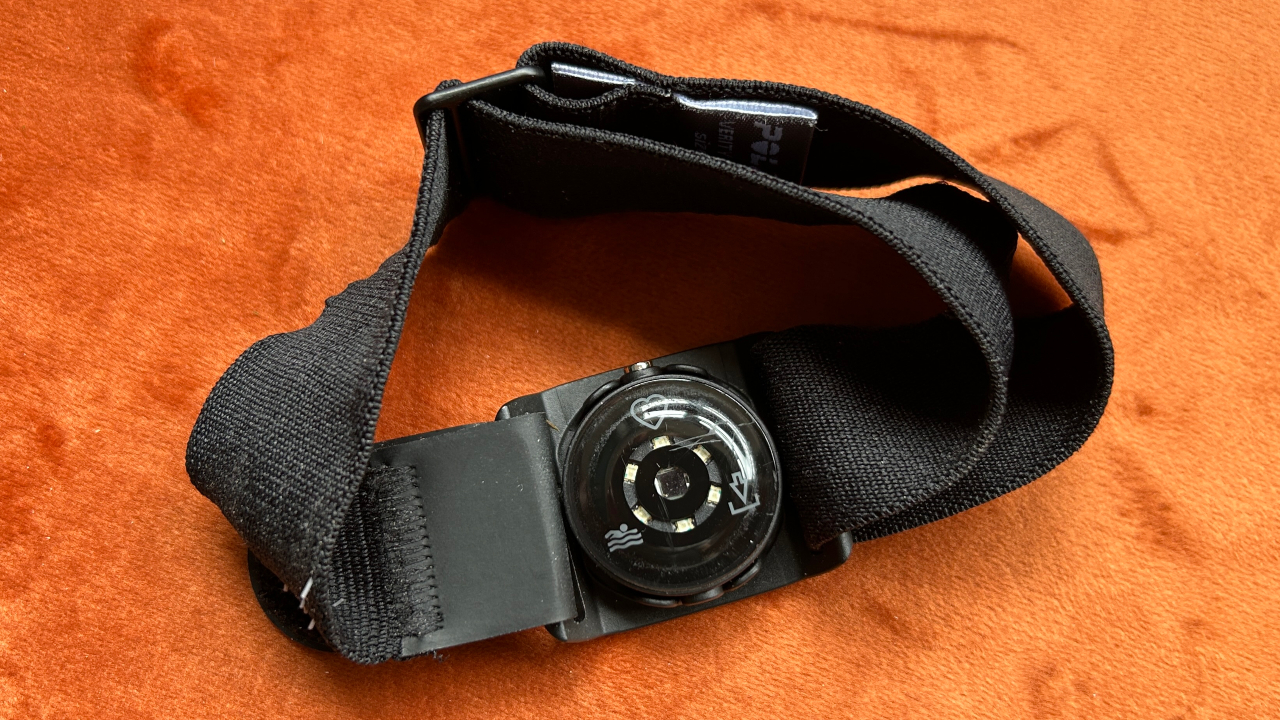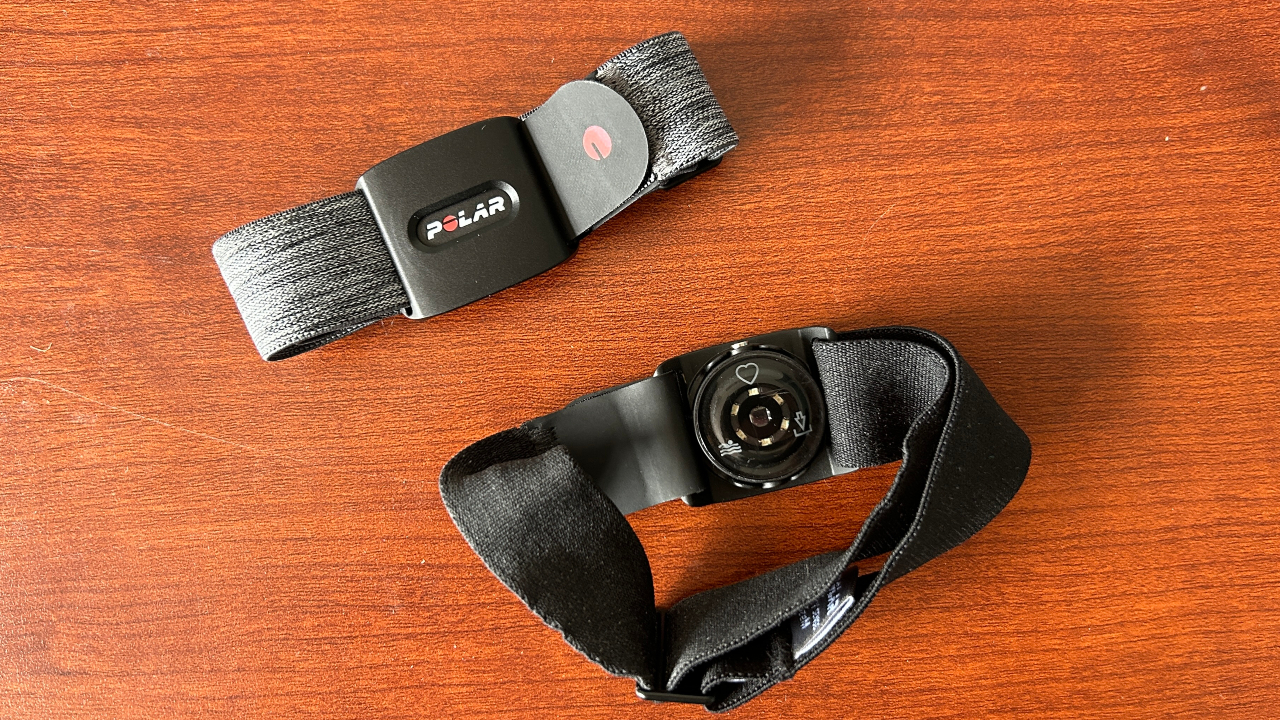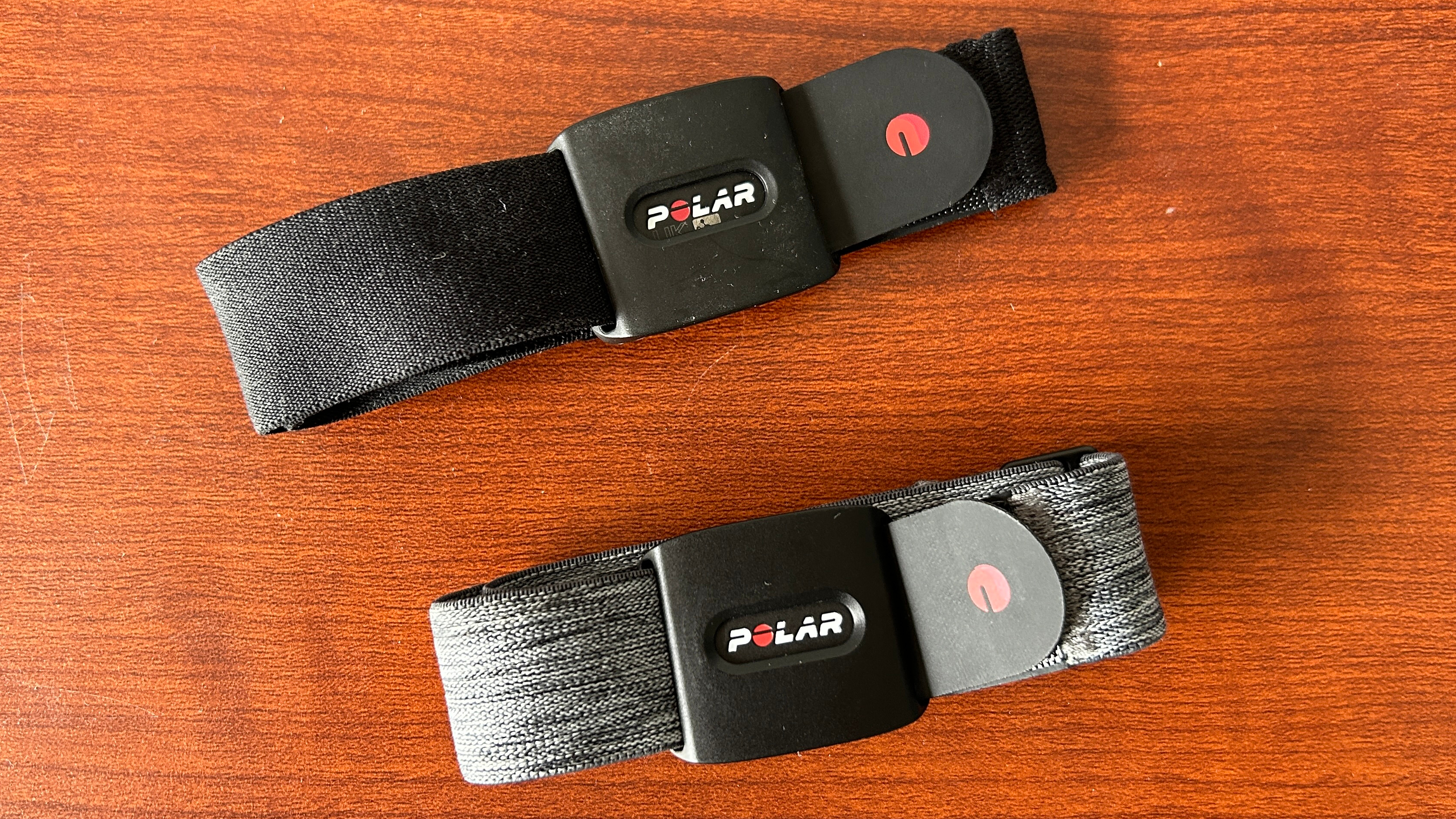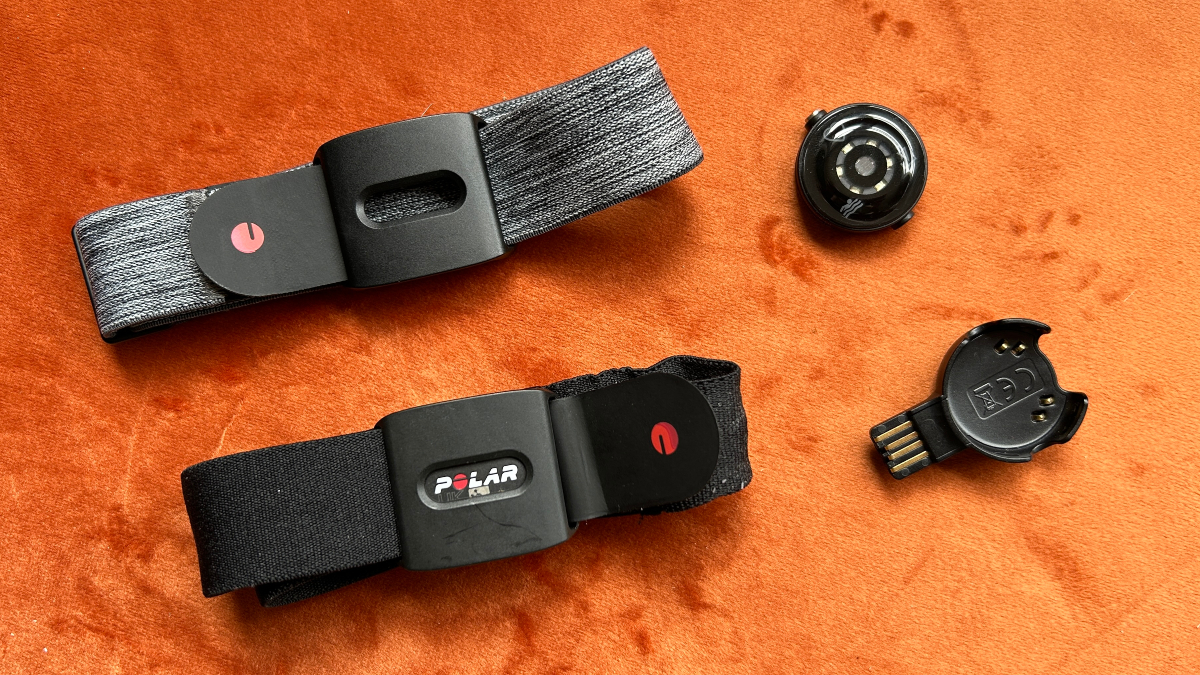Our Verdict
The Polar Verity Sense arm strap heart rate monitor still falls slightly short of the accuracy of a chest strap but the difference is so minimal I rarely noticed it, and many people will find this armband more comfortable and convenient.
For
- Accurate tracking
- Lightweight and comfortable
- Stores workouts
Against
- Not as accurate as chest strap
- No uses outside of workouts
You can trust Coach
The best heart rate monitors for accuracy are chest straps, but many people find them awkward or uncomfortable during longer activities. Armbands like the Polar Verity Sense are a great alternative since they are more accurate than using a wrist sensor, and the Verity Sense is the best arm strap heart rate monitor I’ve tested.
It’s accurate, connects easily to watches and other devices, and has internal storage so you can track workouts on the Verity Sense and then sync them to the Polar app later.
Polar Verity Sense Review: Price And Availability
The Polar Verity Sense originally launched in early 2021, with an updated version coming out in May 2023. It costs $99.95 in the US and £86.50 in the UK. Polar has a cheaper armband in its range, the OH1, which costs $59.95/£51.50.
Design

The Polar Verity Sense is a plastic coin-shaped optical heart rate sensor that sits in an adjustable strap, which you can wear on your upper arm or forearm. I’d recommend the upper arm for increased accuracy. You can also wear the sensor in a clip that’s attached to your goggles to track heart rate from your temple during swims.
It’s a small and light sensor—3cm across and weighing 5g without the wristband, and 19g with it. The Verity Sense has a WR50 water-resistance rating (up to depths of 50m) and has 16GB of internal storage, which can record up to 600 hours of workouts.
The Verity Sense connects to external devices via Bluetooth and ANT+. It can connect to two Bluetooth devices at once, and support unlimited ANT+ connections. It has a broadcast range of 150m, which is double the range of the Polar OH1.
There is one button on the top of the sensor that you use to choose the recording mode you want at the start of a session. The first is broadcast HR mode, which is used to connect the Verity Sense to watches and other equipment. The second is recording mode, which you can use to track a workout on the Verity Sense to sync with an app to check your stats later. The last mode is for swimming.
Sign up for workout ideas, training advice, reviews of the latest gear and more.
The Polar Verity Sense has up to 30 hours of tracking on a charge, which is 18 hours longer than the Polar OH1. The charger is a small circle the sensor clips into, with a USB plug built in. It’s small and I found it easy to misplace between charges.
A one-size-fits-all fabric strap is supplied with the Verity Sense. This is easy to adjust before you put the strap on, though tricky to do while wearing it. The strap has been adjusted to make it harder for it to flip over accidentally during training sessions. There is a velcro clip to unhook the strap and attach it when in position, but I found it hard to secure one-handed. Instead, I just pulled the elastic strap up my arm without unhooking it.

Polar hasn’t changed much with the 2023 version of the Verity Sense, which adds the ability to use personalized heart rate zones when using the sensor in swimming or recording mode. New red and black bands were launched, made with recycled and bio-based materials, to join the original gray band in the range.
The Verity Sense records your lengths when swimming but otherwise is just a heart rate sensor. This does make it different to something like the Whoop band, which will do things like estimating your readiness to train and track your sleep.
How I Tested This HR Monitor
I’ve tested the original Polar Verity Sense and the updated 2023 model. I run most days, as well as doing workouts like strength and yoga sessions, and indoor cycling. During testing I used the Verity Sense at the same time as a chest strap to compare its accuracy. I have also tested other heart rate armbands like the MyZone MZ-Switch and Polar OH1.
Sports Performance
When you turn the Verity Sense on, you have a few seconds to select the mode you want to use by clicking the button. It defaults to broadcast HR to other devices, so you can ignore this if planning to connect it to a watch, but you need to click it to change it to recording or swimming mode. If you don’t manage to select a mode in time you have to turn the sensor off and on again because you can’t change mode once it’s locked.
In the standalone recording mode the Verity Sense doesn’t crop the recording time to just the actual workout, so unless you start it up just as you begin your training it will record extra time at the start. It’s a useful mode for sports where you don’t want to wear a watch, and you can see your heart rate live using the Polar Beat app, or just sync your workout to the Polar Flow app later to check your stats.
I mostly used the Verity Sense in broadcast mode, and both versions of the sensors connected easily with a range of watches, as well as my laptop and tablet when using cycling apps like Zwift or Rouvy. I wore it on my upper arm for the most accurate results.
I usually wore another watch connected to a chest strap to check the accuracy of the Verity Sense in real time during workouts, as well as looking at the graphs afterwards. The Verity Sense nearly always matched perfectly to a chest strap’s readings, especially during workouts done at a steady effort level.
In interval sessions with spikes and drops in heart rate the Verity Sense’s readings would lag slightly behind a chest strap, which you would expect from optical readings as opposed to to a chest strap using electrical signals directly from the heart. During a long hills session I saw the Verity Sense’s heart rate readings take a few seconds to catch up at the start of each rep, then they came down more slowly at the end.

I experienced no major errors using the Verity Sense, though, and it’s accurate enough that I’d be happy to use it instead of a chest strap if I did find using the latter annoying. I find chest straps comfortable and the longer battery life from single-use coin batteries they offer is more convenient for me than recharging the Verity Sense.
I’ve not swum with the Verity Sense yet. To use that mode you need to set the length of the pool you use in the Polar Flow app and attach the sensor to your goggles using the provided clip. The Verity Sense records the lengths you do by noting when you make a turn in the pool. It can link up with the Form swim goggles to show your HR live during swims.
It can’t link to a watch in the water, however, and you can’t download the HR data from the Verity Sense to a swimming workout tracked by a Polar watch in the app after you’ve finished. That’s something you can do with Garmin. Data from one of its chest straps is downloaded to a swimming workout recorded by a Garmin watch once you sync everything with the app.
Battery Life
I tend to do around seven or eight hours training a week, mostly running. The Verity Sense lasted me three weeks on a charge before I’d get antsy and plug it in. That’s because there’s no way to check its battery level apart from charging it, when the LED light on the bottom will change color depending on the battery level.
Going weeks without charging the sensor is convenient, but at the same time means that once a month I’d have to find the charging dock, which was always harder than it should be (my fault, obviously). I found it less convenient to do this than replacing a coin battery in a chest strap once every six months, which is how long the Polar H10 strap lasts me.
Is The Polar Verity Sense Worth It?

If you want an armband heart rate monitor then the Polar Verity Sense is the one to get. It has useful upgrades on the Polar OH1, notably battery life and the improved strap, and is cheaper than the MyZone MZ-Switch, though the latter has the benefit of being used as a chest strap as well.
I’ve no concerns with the accuracy of the Verity Sense, which performs exactly as well as you would expect it would, linking easily to other devices and going weeks on a charge. While it’s expensive, it’s often available in sales.
If you don’t have a problem with using chest straps, they’re still the best option available in my opinion, since they are more accurate than arm bands and cheaper. Even the best I’ve come across—the Polar H10—costs less than the Verity Sense, and you can get more advanced chest straps that will also track things like running dynamics as well as heart rate.

Nick Harris-Fry is a journalist who has been covering health and fitness since 2015. Nick is an avid runner, covering 70-110km a week, which gives him ample opportunity to test a wide range of running shoes and running gear. He is also the chief tester for fitness trackers and running watches, treadmills and exercise bikes, and workout headphones.

